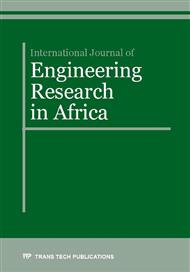p.1
p.7
p.14
p.22
p.33
p.45
p.59
p.68
p.83
Loading Rate Sensitivity of the Essential Work of Fracture, a Case Study on Pure Polypropylene
Abstract:
The essential work of fracture (EWF) method is gaining attention for the toughness evaluation of ductile polymers. However its establishment as a toughness criteria requires that the parameters influencing it and their extent of influence be identified. In the current study the effect of the loading rate on the EWF of pure polypropylene (PP) is investigated. Tensile tests are performed at room temperature on DENT samples with ligament lengths of 7 to 15 mm at loading rates of 2 to 32 mm/min. The results confirm the dependency of the EWF on the loading rate, though a regular trend is not observed. The nonregularity of the EWF on the loading rate is explained by the ligament dependency of the loading rate effect on the specific work of fracture. This study reveals that the similarity of the ligament lengths and loading rate are necessities to yielding comparable values of the EWF.
Info:
Periodical:
Pages:
7-13
Citation:
Online since:
February 2016
Authors:
Price:
Сopyright:
© 2016 Trans Tech Publications Ltd. All Rights Reserved
Share:
Citation:


